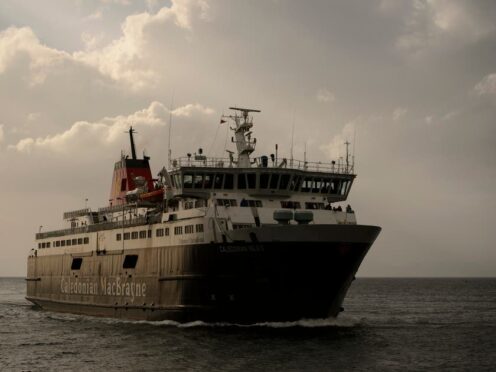
Scotland’s ferry policy is “manifestly dysfunctional” and must be overhauled, an expert has said.
In a submission to a Transport Scotland consultation on its Island Connectivity plan, Roy Pedersen criticised the current process of “the state procuring large, inefficient ships, manned by large live-aboard crew complements, operating on longer routes than necessary, running to overly complex labour-intensive terminals”, which he says “will increase the already high financial cost to the Scottish taxpayer”.
In a 36-page report submitted to the consultation, Mr Pedersen – who owns a transport consultancy and previously worked as head of community, culture and transport at Highlands and Islands Enterprise – recommended moving to a model which would include simpler ferries, with smaller crews on shorter, more frequent crossings.
The Scottish Government has previously announced its intention to directly award the contract for the Clyde and Hebrides network to the publicly-owned CalMac operator – but Mr Pedersen urged the Scottish Government to “un-bundle” the routes on the network and allow other firms to submit bids.
He also pushed for operators to bring their own vessels to the routes, which he said would “wholly remove the need for government capital funding of vessels, bringing a saving of an average of perhaps a further £50 million per annum”.

This move would effectively shutter the Scottish Government’s publicly-owned ferry procurer Caledonian Maritime Assets Limited (CMAL), which the report claims should eventually be “wound up”.
“All this will not happen without capable and informed ministerial direction and leadership,” Mr Pedersen wrote.
“It will require a steady political nerve, but the prize will be greatly improved connectivity to enable our island and remote peninsular communities to flourish, while freeing up large sums of precious taxpayer funds to support Scotland’s struggling public services.
“Failure to grasp this opportunity will inevitably result in ever more public money being poured into a dysfunctional system while our island communities decline.”
Increased investment, he said, would be required to improve road links to ports while islands would benefit from increased population if crews can be encouraged to live on the islands they serve.
Duncan Mackison, the interim chief executive of CalMac, said: “Everyone at CalMac is committed to providing a quality and reliable ferry service and this is reflected in our reliability and punctuality figures, which consistently remain at more than 95% and improved in the last financial year.
“However, we fully share customer concerns regarding cancellations and disruptions and are working closely with third parties and stakeholders to address these issues, whilst also investing record sums in our ageing fleet to maintain resilience.
“This investment in maintenance grew to well over £43 million in 2023 compared with just £20 million in 2017.”
While a spokeswoman for CMAL said: “Unfortunately, Mr Pedersen’s report oversimplifies a highly complex matter.
“For example, building new ports in remote parts of Scotland and ensuring suitable road access would be a multi-million-pound project, and that’s before replacing an entire fleet of ships.
“Consideration must also be given to the wider socio-economic impact an increase in traffic would have in some areas, as well as the devastating effect the removal of ferry services from some ports would have on local communities.”
Transport Scotland have been contacted for comment.
Mr Pedersen – who has appeared repeatedly before Holyrood committees to discuss ferries – also weighed in on the long-running “fiasco” of the two late and over-budget ferries being built at Ferguson Marine in Port Glasgow.
The running political sore could have been avoided, he said, had CMAL opted to commission two 98-car catamarans from an Australian-based yard – at a cost of £12 million each – or a similar design, which would “be more economical to operate and have superior sea-keeping, manoeuvrability and environmental qualities”.
“CalMac, and especially CMAL, seem oblivious to the concept of value for money and show insufficient understanding of the usage of ship design to overcome difficulties rather than play into difficulties created by their approach to design,” he wrote.

Enjoy the convenience of having The Sunday Post delivered as a digital ePaper straight to your smartphone, tablet or computer.
Subscribe for only £5.49 a month and enjoy all the benefits of the printed paper as a digital replica.
Subscribe